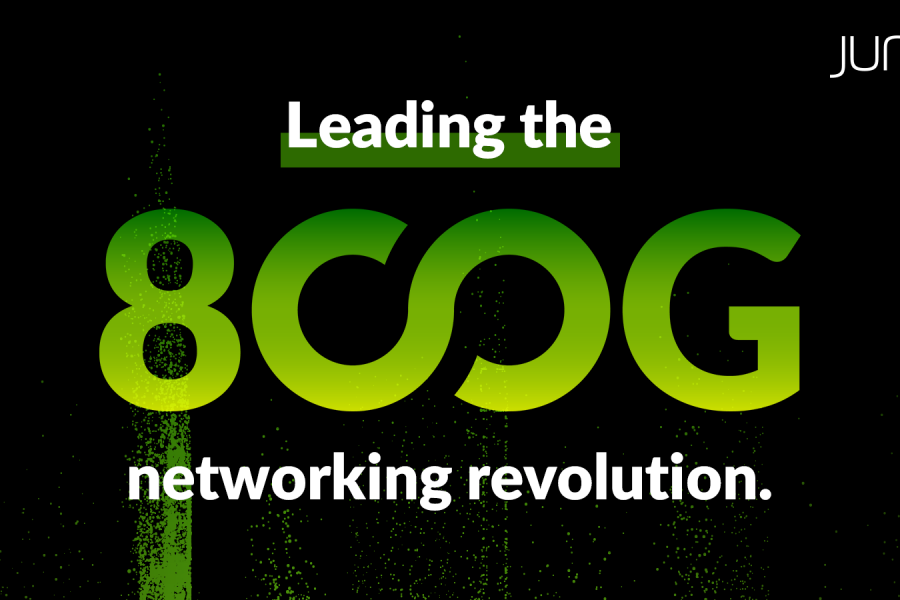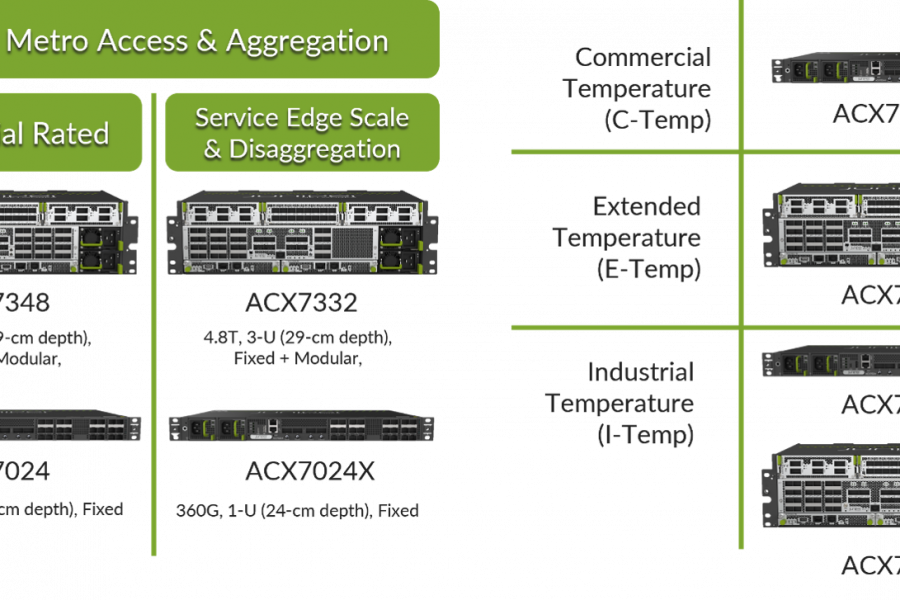This is part two of a five-part series about how Juniper Networks is helping network service providers (SPs) around the world build out Secure Automated Cloud architectures. See part one here.
The network becomes more important. . . and more complex
As the cloud works its way into almost every aspect of daily commerce, the network becomes more important and more complex. This presents tremendous opportunity for SPs of all sizes to play a central role in the new economy:
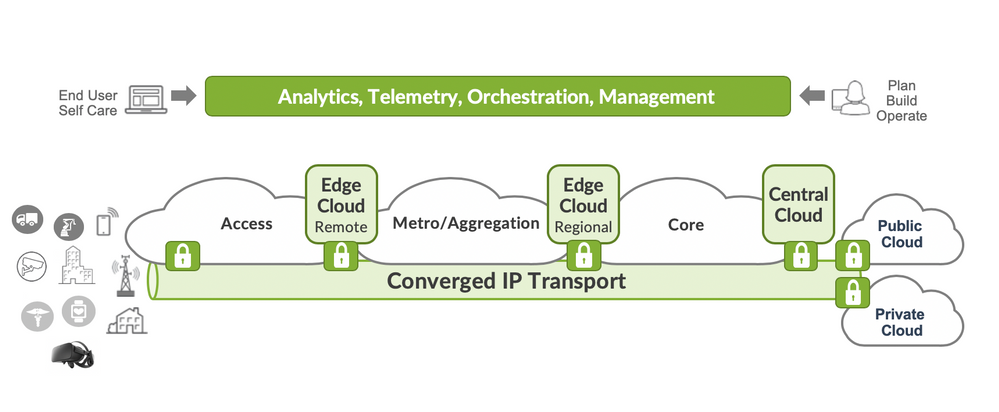
Uniquely positioned to impact network economics
To facilitate the transformation journey, Juniper is executing an infrastructure modernization strategy with SPs that focuses on economic scale up and out, architectural simplification, packet optical convergence and infrastructure security. Innovation across the metro, edge and core optimizes SP CapEx and frees resources to invest in new business opportunities.
Juniper ASIC designs continue to drive down the cost-per-bit to maintain SP economics in the face of relentless traffic growth and flat revenues. Juniper is implementing a 400GbE migration roadmap that increases the per-slot capacity of its edge and core routing platforms up to 14.4 Tbps. Juniper Penta and Triton ASICs, as well as merchant silicon, on the MX, PTX and QFX routing and switching platforms allow network operators to design 400G optimized architectures for data center and core applications.
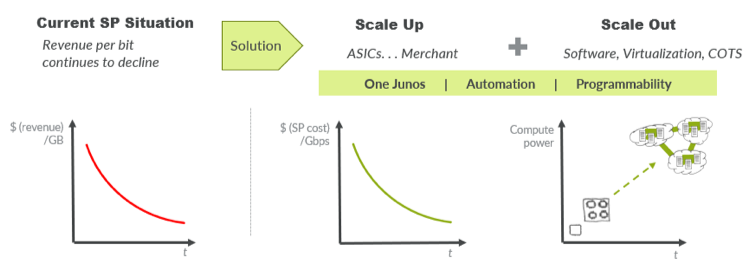
Juniper has invested substantially in 400GbE pluggable optics to further improve overall power efficiency. As networks transition to 400G, optical costs outweigh electronics costs, so an entirely new way of developing pluggable optics is required. Juniper has the know-how to build these optics using state-of-the-art silicon photonics for both receive and transmit in a single opto-ASIC design in a QSFP-DD form factor, which fundamentally changes the economic equation.
With Juniper packet-optical convergence platforms, including ACX5448-D and ACX6360 Universal Metro Routers, operators have the freedom to mix and match Ethernet and optical ports, ushering in a new era of flexibility and optimization into metro architectures. In many cases, SPs can now eliminate transponders entirely and collapse metro packet and optical functions into a single solution. Converged platforms allow SPs to seamlessly shift metro traffic from IP to optical and back again with fewer interfaces and less hardware. In many parts of the metro, operators can now convert packet traffic to DWDM in one platform, transport to a DWDM port on a comparable platform in another part of the metro and convert it back to packet—with almost nothing else in between.
Juniper’s “universal chassis” for the QFX, PTX and MX platforms saves up to 65% in operational costs through common activities such as certification, maintenance and sparing. Juniper is the first vendor to offer multiple switching and routing platforms standardized on a single chassis.
Further standardization around network protocols such as segment routing in the underlay and EVPN in the overlay which span the entire network (metro, edge, core and data center), enables operators to employ software-defined networking (SDN) controllers and orchestrators to automate workflows associated with designing, implementing and operating each network domain. Juniper Segment Routing simplifies networking by essentially replacing traditional, resource-heavy traffic engineering (TE) with the NorthStar Controller that performs similar TE functions in a more powerful and efficient manner. Routers and switches simply forward traffic along the paths computed by NorthStar based on real-time network conditions and closed loop automation.
Pervasive security integrated with the network
The attack surface is growing. Billions of new devices are coming online. IoT, 5G, MEC, CUPS, network slicing and other disaggregation trends generate additional interfaces that must be secured. While others have viewed the network as a liability with respect to security, Juniper sees it as an asset. We no longer draw a distinction between networking and security. Juniper’s approach is based on pervasive security integrated with the network.
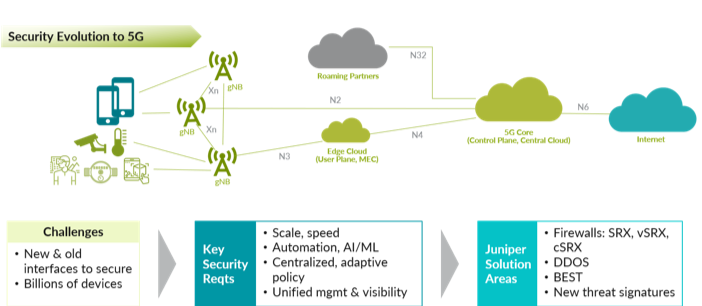
Key security requirements include raw performance (scale and speed to keep up with the attacks), aligning security infrastructure with the 4G to 5G evolution, and intent-driven policy that follows end users and applications as they move. Firewalls in physical, virtual machine (VM) and container form-factors, as well as security tools that unify management and visibility across the entire network are critical for success. The idea is to write security policies once and deploy across the multicloud, which greatly simplifies the operational aspects of managing network security.
Operational consistency across physical and virtual
Operational consistency is the key to SP economics. Juniper bridges the gap between the physical (blackbox, greybox, whitebox) and virtual worlds through consistent feature sets and a common Junos operating system. Significant parts of the network will be untouched by virtualization for the foreseeable future. But these dedicated boxes can be operated as cloud-like infrastructure through new orchestration tools.
Infrastructure management and orchestration (MANO) must be more sophisticated to fully realize the benefits of virtualization at scale. Juniper’s analytics/telemetry/orchestration/management framework provides a foundation with a rich set of APIs to simplify and automate the entire network service lifecycle, from configuration, to monitoring, to remediation and everything in between – across both virtual and physical network elements.
In part three of our blog series, we will describe how Juniper is working with SPs to transform their operations.
Learn how to build a modern network for the new era on June 10 (US/EMEA) and June 11 (APAC) at our Juniper Virtual Summit for Cloud & Service Providers.

